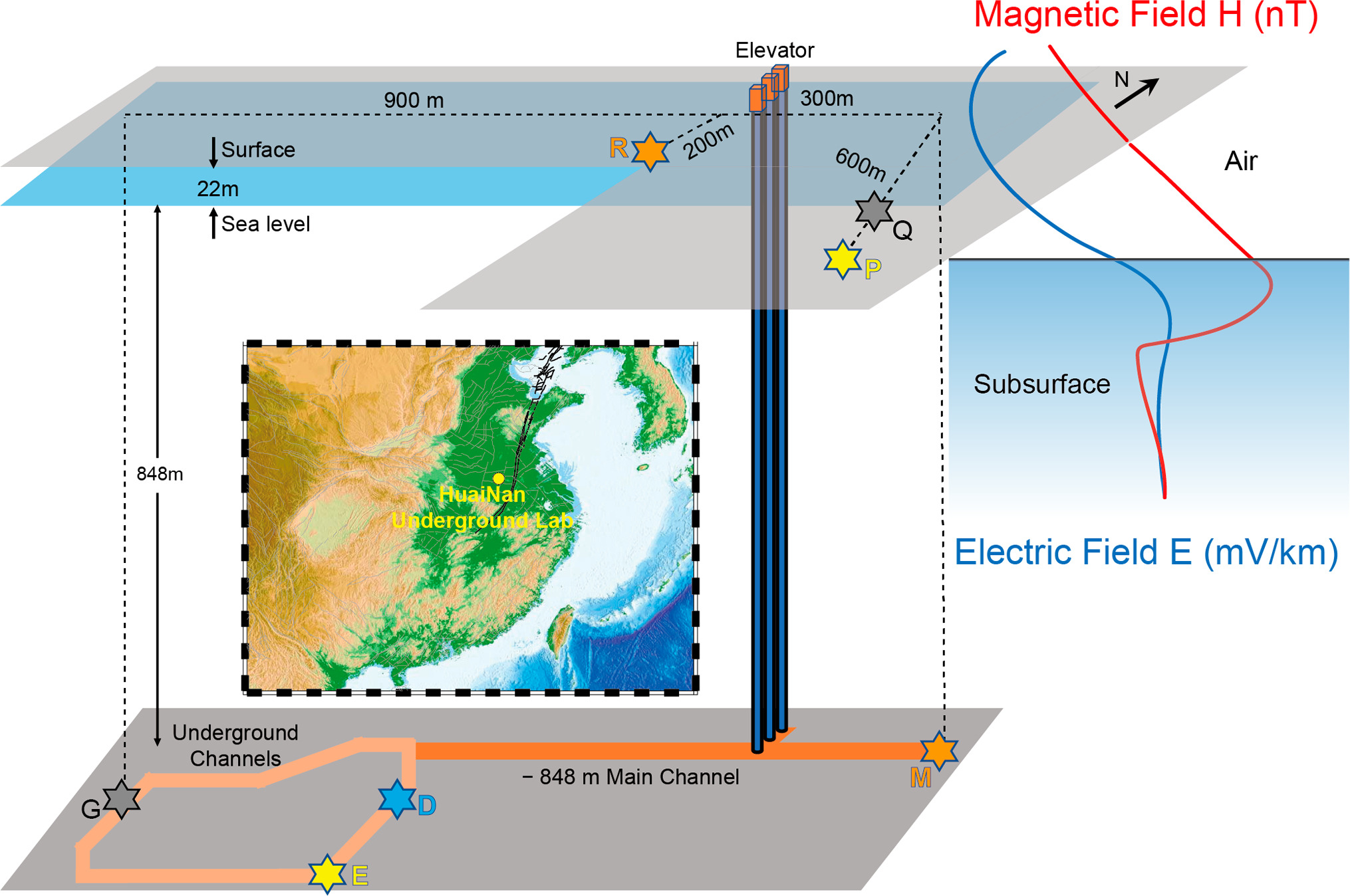https://doi.org/10.1140/epjp/s13360-024-05033-1
Regular Article
Insights from underground laboratory observations: attenuation-induced suppression of electromagnetic noise
1
School of Geophysics and Information Technology, China University of Geosciences, 100083, Beijing, China
2
Key Laboratory of Intraplate Volcanoes and Earthquakes (China University of Geosciences, Beijing), Ministry of Education, 100083, Beijing, China
Received:
4
October
2023
Accepted:
22
February
2024
Published online:
5
March
2024
This study involved synchronous observations of electromagnetic (EM) fields at both ground level (+ 22 m above sea level) and a depth of − 848 m within the Huainan Underground Laboratory, China. The primary objective was to assess how an underground environment influences the temporal and spatial variations in EM fields. A conductive cover acts as a low-pass filter as expected, resulting in the attenuation of high-frequency (> 1 Hz) EM fields in the underground laboratory. Specifically, these fields were attenuated by factors ranging from approximately 10–100 times compared to ground level fields. To analyze the data, a digit low-pass filter with a 1-Hz cutoff frequency was applied consistently to both ground and underground datasets. Notably, the underground data exhibited significantly lower levels of contamination from background noise. Additionally, the Allan variance analysis suggested favorable conditions for long-term stable observations in an underground environment. Ground level data exhibited diurnal disturbance noise associated with human activities, a characteristic absent in the underground data. In conclusion, our study suggests that employing a comprehensive approach that combines digital filtering and attenuation suppression holds the potential to yield cleaner EM fields when compared to traditional ground observations. These findings carry valuable implications for EM field research, highlighting the benefits of conducting observations in underground settings to enhance data quality and stability.
Supplementary Information The online version contains supplementary material available at https://doi.org/10.1140/epjp/s13360-024-05033-1.
Copyright comment Springer Nature or its licensor (e.g. a society or other partner) holds exclusive rights to this article under a publishing agreement with the author(s) or other rightsholder(s); author self-archiving of the accepted manuscript version of this article is solely governed by the terms of such publishing agreement and applicable law.
© The Author(s), under exclusive licence to Società Italiana di Fisica and Springer-Verlag GmbH Germany, part of Springer Nature 2024. Springer Nature or its licensor (e.g. a society or other partner) holds exclusive rights to this article under a publishing agreement with the author(s) or other rightsholder(s); author self-archiving of the accepted manuscript version of this article is solely governed by the terms of such publishing agreement and applicable law.






